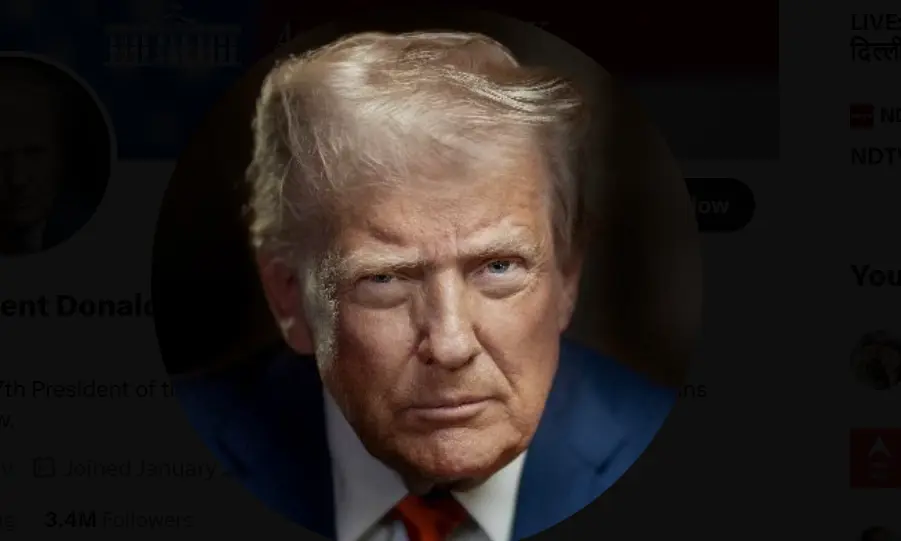
1. Historic US–EU Trade Deal Nears Completion: A Game-Changing Pact to Redefine Global Commerce (photo - X)
Background: A Relationship Ready for Renewal
US-EU Trade Deal Nears the Finish Line – The transatlantic trade partnership between the U.S. and EU has long served as a cornerstone of global commerce. Together, they account for over 40% of global GDP and conduct over $1 trillion in bilateral trade annually.
However, trade tensions in the past decade spurred by tariffs, data privacy disputes, and divergent environmental standards, created a need for a modernized pact that reflects today’s digital-first, climate-conscious economy.
Negotiations began in early 2024 with multiple rounds held in Brussels, Washington D.C., and virtual platforms. Now, as delegates enter the final stretch, the outlines of this historic agreement are becoming clear.
Tariff Rebalancing: Toward a Leaner Trade Framework
At the heart of the deal is the restructuring of cross-border tariffs on key goods:
Key Provisions
- Elimination of tariffs on electric vehicles, semiconductors, and pharmaceuticals
- Reduced duties on agricultural imports, especially dairy and wine
- Streamlined customs inspections for AI-powered machinery and green-tech equipment
The aim is to enhance competitiveness without undercutting domestic producers. While EU farmers remain cautious, U.S. agri-tech exporters are already celebrating potential gains.
“Our wine exports will reach European shelves faster and cheaper,” said a Napa Valley producer, eyeing increased market share in France and Germany.
Digital Commerce & Data Privacy: Bridging Regulatory Gaps
Digital trade has emerged as the most complex negotiation point — especially around data privacy, cross-border e-commerce, and AI regulations.
US-EU Trade Deal –Notable Inclusions
- Recognition of equivalent data protection frameworks for smoother cloud services and digital products
- Establishment of a Transatlantic AI Council to align ethical AI development and deployment
- Updated protocols for digital tax compliance, aiming to avoid redundant levies on global tech companies
This section represents a political balancing act. The EU’s GDPR-centric data culture clashes with the U.S.’s market-driven digital model, but negotiators are finding common ground through shared standards and accountability mechanisms.
Environmental Standards: Aligning Sustainability Goals
In an era of climate urgency, environmental clauses are front and center in this trade pact.
Proposed Measures
- Mutual recognition of carbon pricing mechanisms
- Joint incentives for low-emission manufacturing and energy transition projects
- Creation of a Transatlantic Green Tech Fund, with up to $100 billion in joint capital by 2030
Environmental lobbyists have cautiously praised the effort, urging stronger enforcement and tracking frameworks. Meanwhile, industrial sectors seek assurance that green compliance won’t overburden small and mid-size businesses.
Political Dynamics: Who’s Behind the Push?
Negotiations are spearheaded by:
| Leader | Role | Position |
| U.S. Trade Representative | Katherine Reynolds | Supports greater tech trade alignment |
| EU Commissioner for Trade | Helena Anders | Advocates robust climate clauses |
| President Donald Trump | U.S. Executive Endorsement | Emphasizes job creation & manufacturing revival |
| EU Parliament Trade Council | Legislative Review Body | Balancing industrial and green agendas |
President Trump’s involvement adds urgency, as he frames the agreement as “a patriotic upgrade for American exports,” while EU negotiators point to strategic resilience in light of global disruptions.
Reactions: Anticipation and Apprehension
The response from both sides of the Atlantic is mixed, though largely optimistic:
Enthusiastic Sectors
- Tech firms anticipate faster software deployment and fewer compliance barriers
- EV manufacturers are gearing up for expanded markets and lower costs
- Green energy developers expect increased transatlantic investment and infrastructure collaboration
Cautious Stakeholders
- Agricultural unions in Europe worry about U.S. competition
- Consumer rights organizations want stronger digital privacy safeguards
- Local manufacturers fear losing protection against bulk imports
US-EU Trade Deal Economic Impact: Forecasts for the Next Decade
Economists suggest the deal could:
- Increase transatlantic GDP by $150 billion annually
- Create over 2.5 million jobs across key sectors like tech, transport, and green manufacturing
- Accelerate innovation through shared IP frameworks
U.S. Chamber of Commerce estimates a 23% rise in SME exports, while the European Central Bank forecasts stabilization in post-pandemic inflation metrics driven by better supply chain fluidity.
Geopolitical Significance: More Than Just Economics
Beyond trade, this agreement serves as a diplomatic signal countering the rise of protectionism and reinforcing Western alliances amid tensions with China, Russia, and global populism.
Key strategic goals:
- Strengthen NATO-aligned supply chains
- Deter state-backed digital disinformation
- Promote climate diplomacy and clean tech evangelism
As the world shifts toward multipolar competition, a united U.S.-EU front becomes essential for sustaining democratic values in economic policy.
Conclusion: A Trade Deal for Tomorrow
As final negotiations continue, the US-EU trade deal / agreement stands poised to become one of the most influential economic accords of the decade. In harmonizing markets, digital frameworks, and sustainability goals, the pact represents a forward-looking model of diplomacy and growth.
The ripple effects will span sectors, borders, and ideologies, proving that when global powers collaborate with vision, prosperity can be both inclusive and principled.
What is the primary goal of the U.S.–EU trade deal?
To modernize transatlantic trade by harmonizing tariffs, enhancing digital commerce, and aligning environmental standards while boosting innovation and geopolitical ties.
How will it affect the tech industry?
Tech companies will benefit from standardized data regulations, reduced barriers for software deployment, and coordinated AI ethics frameworks.
Are there risks to agriculture?
Yes – EU farmers fear increased competition from U.S. exports. Negotiators are considering protective clauses and subsidies to offset disruption.
Will environmental clauses be enforceable?
The agreement proposes shared compliance tools and funding initiatives, but critics argue that enforcement mechanisms need to be strengthened.
When is the deal expected to be signed?
Officials are targeting August 2025 for formal signing, pending final ratification from both the U.S. Congress and EU Parliament.
Stay updated with the latest news on Rapido Updates. Keep yourself updated with The World, India News, Entertainment, Market, Automobile, Gadgets, Sports, and many more